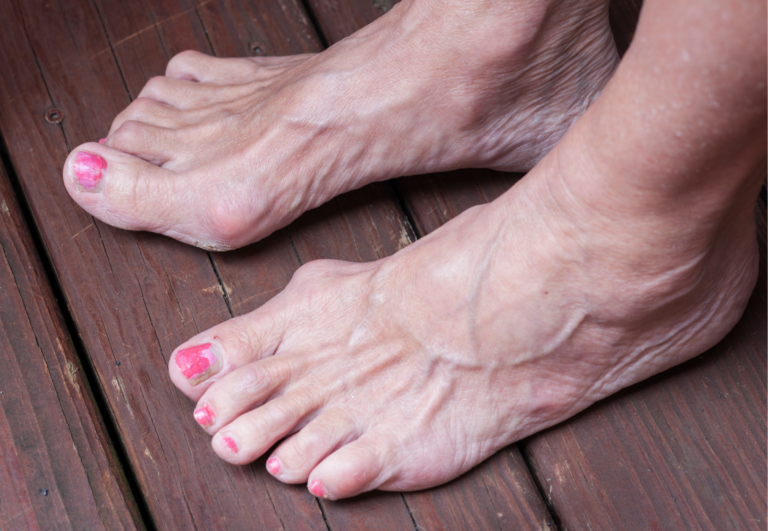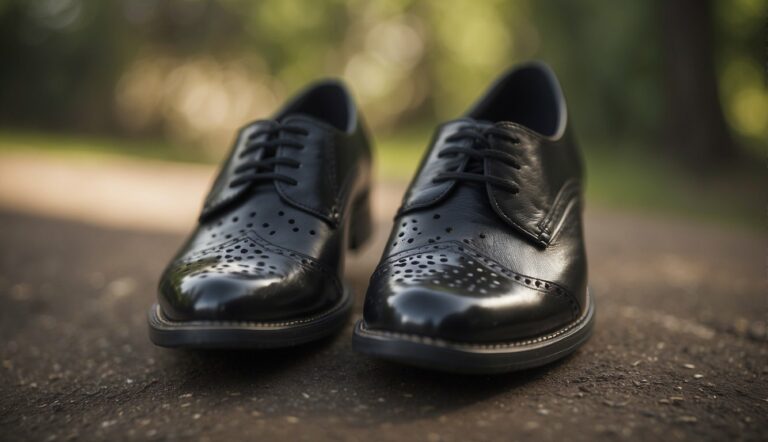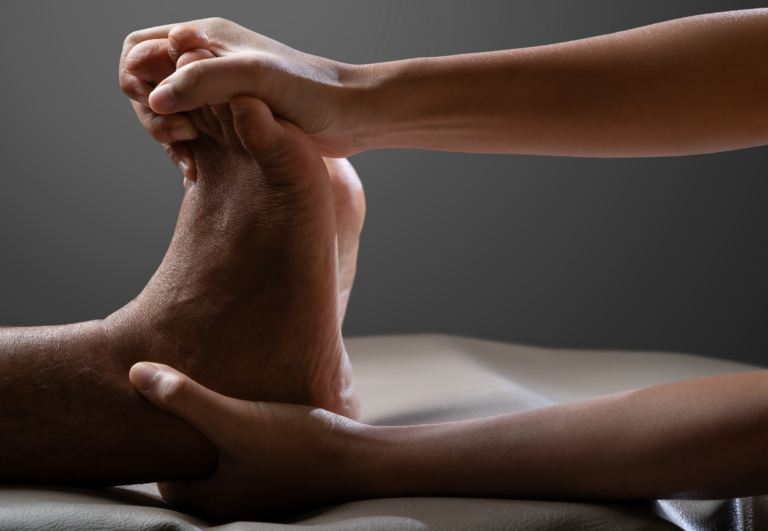How to Use Toe Spacers for Injury Recovery: Enhancing Healing After Sports Injuries
As a seasoned user of toe spacers, I’ve seen firsthand how these simple devices can aid in recovery from sports-related foot issues. Toe spacers, designed to spread your toes, mimic the natural foot position and can be a game changer in addressing pain and promoting recovery. By realigning the toes to their natural position, toe spacers take pressure off the joints and soft tissues, potentially speeding up the healing process following a sports injury.
Incorporating toe spacers into your recovery routine can be quite straightforward. They work by gently stretching the muscles and tendons, increasing circulation and helping to correct imbalances caused by tightly-packed toes or improper footwear commonly used in sports. Regular use, particularly during periods of rest or post-workout, can bring relief from discomfort and help maintain proper toe alignment, which is crucial for athletes looking to get back to their best performance levels.
Recovery with toe spacers isn’t just about wearing them; it’s about consistent and mindful use. Paired with targeted exercises and proper rest, toe spacers can be an effective tool in managing and preventing foot-related sports injuries. Whether you’re dealing with blisters, bunions, or just general foot fatigue from athletic activities, these spacers might be the unsung hero in your recovery regimen.
How to Use Toe Spacers for Injury Recovery
Toe spacers can be a useful tool in the recovery process from certain foot injuries by providing several benefits:
1. Promoting Proper Alignment
Injuries can often lead to or result from misalignment in the toes and feet. Toe spacers help realign the toes to their natural position, which can aid in the healing process by reducing stress on the injured areas.
2. Reducing Pressure and Friction
After an injury, the toes may be more susceptible to pressure and friction, which can exacerbate pain and delay healing. Toe spacers separate the toes, minimizing these forces and providing a more comfortable environment for recovery.
3. Improving Circulation
Good circulation is vital for healing. Toe spacers can prevent the toes from crowding and improve blood flow to the injured area, which can help reduce inflammation and speed up the recovery process.
4. Enhancing Muscle Recovery
By allowing the toes to spread naturally, toe spacers encourage the strengthening of the intrinsic foot muscles. Stronger foot muscles can support the recovery of injured tissues and help prevent future injuries.
5. Supporting Rehabilitation Exercises
During the recovery phase, rehabilitation exercises are often prescribed to restore strength and flexibility. Toe spacers can be used during these exercises to ensure the toes stay properly aligned and to enhance the effectiveness of the exercises.

It’s important to consult with a healthcare professional or a physical therapist before using toe spacers for injury recovery to ensure they are suitable for your specific injury and recovery plan. They can provide guidance on how to properly use toe spacers as part of your rehabilitation regimen.
Toe Spacers and Their Role in Recovery
I’ll quickly guide you through what toe spacers are, why proper toe alignment matters, and the different materials available so you can understand their role in sports injury recovery.
What Are Toe Spacers?
Toe spacers, sometimes referred to as toe spreaders or separators, are devices that fit between your toes to maintain proper spacing. They combat the compression that toes often endure from tight-fitting shoes or injury. By allowing each toe to lay flat and avoid overlap, the spacers enable muscles and tendons in the foot to stretch and recover.
The Importance of Proper Toe Alignment
Proper toe alignment is crucial for distributing body weight evenly during movement. Misalignment can lead to various issues, including stress on certain parts of the foot, overcompensation injuries, and impaired balance. Toe spacers work to realign your toes to their natural position, aiding in recovery by alleviating undue stress on the foot and its muscles.
Mechanics and Materials: Silicone vs Foam vs Gel
The efficacy of toe spacers largely depends on their materials:
- Silicone:
- Pros: Durable, flexible, easily cleaned
- Cons: Can be more expensive
- Foam:
- Pros: Soft, lightweight
- Cons: Less durable, wears quickly
- Gel:
- Pros: Comfortable cushioning, fits snugly
- Cons: May not provide as much force for re-alignment
In my experience, silicone toe spacers offer a happy medium between durability and comfort. Foam is rarely my first recommendation due to its brief lifespan, although it might serve as a gentle introduction for those new to the concept. Gel is a nice middle ground, though for individuals with significant alignment issues, the firmer silicone might provide better results.
Identifying Sports Injuries That Benefit from Toe Spacers
Toe spacers are instrumental in the recovery process for specific sports-related foot conditions. These devices are designed to provide relief and promote healing by maintaining correct toe alignment.
Common Toe and Foot Injuries in Athletes
Athletes often encounter numerous foot injuries that can benefit from the use of toe spacers. The strain from constant movement, pressure, and impact during sports can lead to various complaints. Here’s a list of common toe and foot injuries athletes face:
- Bunions: These painful swellings occur at the base joint of the big toe and can cause significant discomfort during sports.
- Hammertoes: An imbalance in the muscle and ligaments around the toe joint causes the middle joint of the toe to bend and become stuck in this position.
- Plantar fasciitis: Characterized by pain in the heel and bottom of the foot, often worse upon taking the first steps after waking up.
- Blisters, corns, and calluses: Result from friction and pressure during athletic activities, commonly affecting the toes.
- Toe deformities: Various misalignments that arise either congenitally or from the demands of specific sports.
Conditions Treated with Toe Spacers
Toe spacers aren’t just for maintaining pedicures; they’re also used to aid in the recovery from specific sports injuries. The application of toe spacers can be beneficial for:
- Bunions and Hammertoes: By separating the toes, spacers can help to realign the joints and provide the space needed to reduce pressure and pain.
- Plantar fasciitis: Although toe spacers don’t directly treat plantar fasciitis, they can help improve overall foot mechanics that may alleviate symptoms.
- Preventing Blisters and Calluses: Proper toe alignment can decrease the excessive friction that leads to these minor but painful foot injuries.
In my experience, the most noticeable benefit of using toe spacers is the prevention of overcrowding of the toes, which is a common cause of these types of sports injuries. With regular use, many athletes find toe spacers to be an essential part of their recovery toolkit.
Implementing Toe Spacers into Recovery Routines
Incorporating toe spacers into recovery routines can significantly enhance foot health and athletic performance. Proper use ensures alignment of toes, which may expedite recovery and prevent future sports injuries.
Choosing the Right Size and Fit
When selecting toe spacers, the fit is crucial for their effectiveness. The right size toe spacers should feel comfortable, without causing any pain or excessive pressure. I advise athletes to begin with a smaller size to ease into the use of toe spacers and avoid discomfort. It’s often beneficial to consult with a footwear specialist to find the best fit.
Recommended Size Guide
- Small: For athletes with narrow feet or lower toe spread.
- Medium: For those with an average toe spread, usually fitting most athletes.
- Large: For athletes with wide feet or significant toe separation needs.
Exercises to Enhance Recovery with Toe Spacers
Once the proper toe spacers are in place, certain exercises can further assist in recovery. Here are a few to consider:
Toe Squeezes:
- Place the toe spacers between each toe.
- Squeeze your toes together gently, hold for a few seconds, and release.
- Repeat 10 times for optimal toe strength.
Toe Spreads:
- Keep the spacers on.
- Spread your toes as wide as possible, hold for a few seconds, and relax.
- Perform this 10 times to improve toe mobility.
Walking:
- Start by walking short distances with toe spacers on.
- The natural motion of walking can help toes adjust to the spacers.
These exercises, combined with the consistent use of toe spacers, can aid in the recovery from sports-related foot injuries and enhance overall foot performance.
Maximizing the Benefits of Toe Spacers for Athletes
Toe spacers can enhance recovery and elevate performance by improving foot strength and promoting stability. My goal is to guide athletes in utilizing these tools effectively.
Foot Strength and Mobility
I recommend using toe spacers as part of a routine to build foot strength and mobility. They work by creating space between toes, which can lead to improved range of motion and intrinsic muscle activity. Start with short periods of use and gradually increase, integrating them into your warm-up or cool-down exercises.
- Routine: Incorporate toe spacers 3-4 times a week
- Duration: Begin with 5-10 minutes and build up to 30 minutes
Improving Balance and Stability in Sports
Incorporate toe spacers into balance-focused training to aid stability and alignment. This practice is crucial for athletes, as it can improve body mechanics and reduce the risk of injury. Focus on exercises that challenge your balance while wearing toe spacers to notice a difference in your performance.
- Exercises: Single-leg stands, squats, or yoga poses
- Focus: Keep your weight evenly distributed and be mindful of your body alignment
Practical Tips for Maintenance and Usage
To effectively recover from sports injuries using toe spacers, knowing how to maintain and use them properly is crucial. Comfort and hygiene are paramount.
Cleaning and Caring for Your Toe Spacers
- Wash: Rinse your toe spacers under lukewarm water after each use. Use a gentle soap to remove any debris, maintaining the material integrity.
- Dryness: Pat them dry with a towel or let them air dry completely before the next use to prevent any fungal growth.
- Storage: Store your toe spacers in a clean, dry place away from direct sunlight to preserve their shape and elasticity.
Frequency of Replacement:
- Replace toe spacers if they show signs of wear or tear to ensure they maintain effectiveness.
Integration into Daily Routines
Integrating toe spacers into your daily routine can be seamless:
- Morning Routine: Consider inserting toe spacers for a short period as you start your day to help with toe alignment.
- During Sleep: For some, wearing toe spacers at night can be beneficial, but ensure it’s comfortable and doesn’t disrupt your sleep.
- Footwear: Choose shoes with enough space to accommodate the spacers. Avoid tight shoes to prevent counteracting the spacer’s benefits.
- Consistency: Daily use can provide ongoing relief, as regular spacing can help improve balance and alignment over time.
| Time | Activity | Toe Spacers Use |
|---|---|---|
| Morning | Gentle stretching & preparing | Optional short duration |
| Daytime | Routine activities, work | As tolerated with proper shoes |
| Evening | Relaxing, winding down | Yes, if comfortable |
| Overnight | Sleeping | Optional, based on comfort |
By keeping your toe spacers clean ad integrating their use into your daily routines, you’ll support your recovery from sports injuries effectively.





